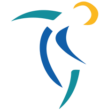Headaches

In this issue we will be discussing neck related headaches. People are often surprised when I ask them whether they have had any physiotherapy treatment for their headaches. It is not common knowledge that many headaches arise from the neck (cervical spine).
There are many different types of headaches including migraines, tension headaches, cluster headaches and allergies to name a few. As physiotherapists we look at neck related headaches. Sometimes headaches are misdiagnosed and are called migraines when they are not and sometimes sufferers can have several types of headaches.
We will look at neck related headaches in this issue, their symptoms, how we treat them and as usual have a sheet of exercises that you can do to help with these types of headaches.
Keep fit and well and enjoy!
Symptoms of neck related headaches
Neck headaches can often be misdiagnosed as migraines because they often share similar symptoms. Pain is often felt in the same areas. Therefore, during the assessment we incorporate your symptoms and our findings from our physical examination to determine whether it is actually a true migraine or neck related headache.
Some of the possible symptoms of a neck related headaches include :
- Stiff neck
- Painful neck
- The headache is mainly felt on one side of your head and it will reoccur on the same side
- The pain seems to radiate form the base of the skull up to the top of the head and even to the front of the head
- The headache may worsen or lessen with neck movements
- The headache may feel better when you massage the top of your neck
You may only have one of these symptoms or many. Often people will say “But my neck isn’t sore”, it does not need to be sore for your headaches to come from here and for my patients who I have treated for their neck related headaches, they will tell “The physio will find the sore spots!!”
Diagnosis
A headache may be caused by many different reasons and therefore correct diagnosis of a neck related headache is important. A thorough subjective examination is required to begin with where we ask you lots of questions on how your headache behaves. This gives us many clues about the nature of your headache. The more you tell us the better picture we get.
This is followed by a physical examination where we look at your neck movements and feel your muscles and joints and how well (or not well!) they move. Many people ask us if an x-ray or scans are required. If after we examine you we feel it would be best we will refer you to have a neck x-ray. Often they are not required and we can treat you with our physical examination findings.
Treatment
Physiotherapy treatment concentrates on the main findings during the assessment. It may include all or some of the following techniques:
- Loosening of stiff neck joints (facet joints). This would be the most common technique we use. Stiff joints in the neck refer pain into the head, therefore causing headaches.
- Loosening of tight muscles in the neck. Most people will tell us that they “carry their stress in the neck muscles”. This is common that we tighten our neck muscles when stressed and over time these muscles remain tight.
- Loosening of tight nerves. When we talk about tight structures we often only talk about muscles and joints but nerves can also tighten up. These also can be stretched and treated.
- Strengthening of neck muscles and various postural muscles. If our muscles are weak they cannot cope with holding our heads up all day. This can lead to poor posture affecting the neck joints and muscles, leading to headaches.
- Advice on posture. Best ways to sit in front of the computer, sleep, work to avoid hurting neck structures which may cause headaches.
General fitness
Maintaining your general fitness will also help manage neck related headaches. Fitness helps with your muscle endurance. If you have poor endurance you tire more easily and therefore by the end of the day your posture suffers. This often leads to poor posture. The most common posture we see that can lead to a sore tight neck that may cause headaches is the chin poke posture. The chin pokes forward as we slouch in front of the computer or driving. This may cause stiff upper facet joint and muscle tightness leading to headaches. Research has found that the fitter you are the less you tire by the end of the day. It also leads to less tightness and more mobility.
Exercises
Click here for some exercises you can do to help with neck movements and flexibility.
Resources
https://www.physiotherapy.asn.au/APAWCM/Physio_and_You/Headaches.aspx
https://choose.physio/your-body/neck/neck-related-cervicogenic-headache
